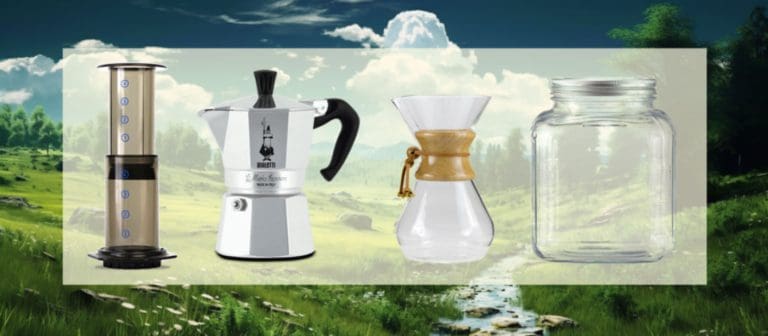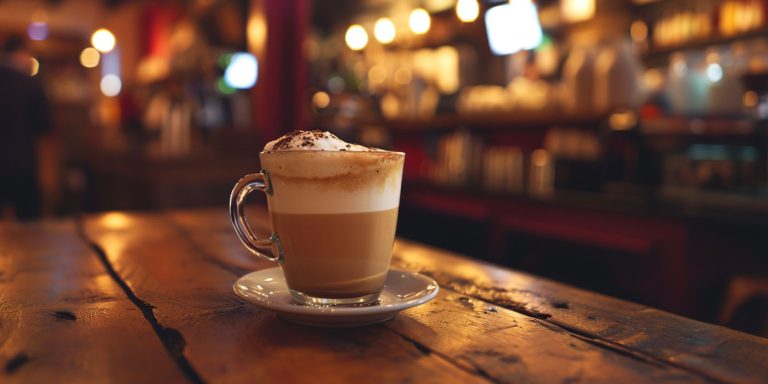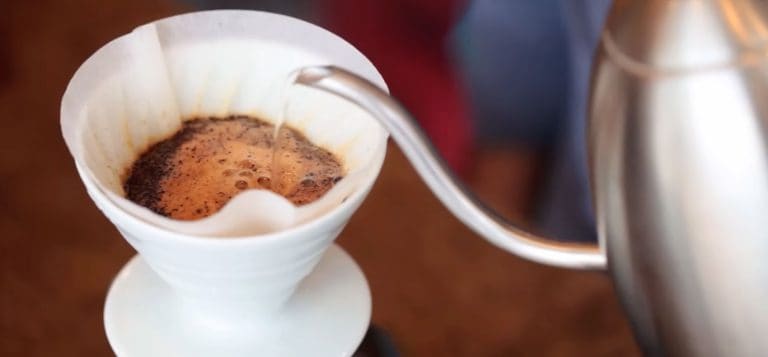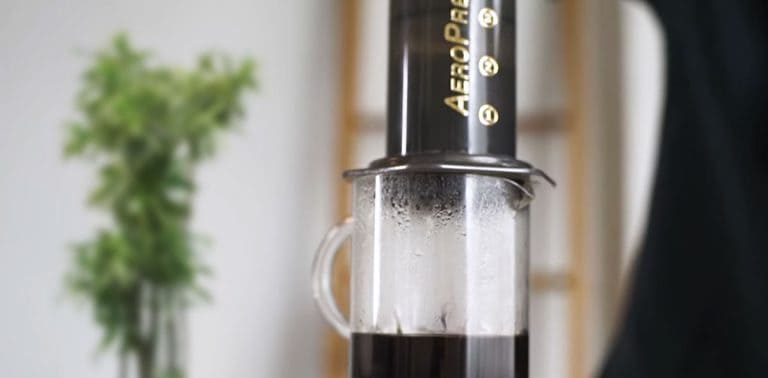Ultimate Guide to Choosing the Perfect Coffee Filter: Types, Shapes, Sizes, and Impact on Taste
Connoisseurs of the coffee world know that choosing the right filter is an important part of the brewing experience, providing a gateway for your ground coffee beans to turn into a delicious brew.
But some rookie coffee brewers may find themselves asking, “Which filters are the best for my coffee?”
Let me answer that in this ultimate guide, where you’ll learn about different types of filters:
- their materials,
- shapes,
- sizes, and
- how they all impact taste.
I’ll also cover the pros and cons associated with each type as well as some brand-specific systems.
There is a lot to talk about, so let’s do this.
Why Use Coffee Filters?
A filter acts like a sieve, trapping all of the coffee oils, grounds, and sediment – if it didn’t exist, unwanted elements would be in our cups. But at the same time, the type of filter you use when brewing your cup can have an enormous impact on its flavor and aroma.
That’s why choosing the right filter for your brew will help ensure that you get the perfect flavor, every time.
But it’s important to remember that “one size fits all” doesn’t apply here – no matter how fancy the system may be.
3 Types of Coffee Filter Materials: Pros and Cons

Coffee filters come in three categories based on their materials: paper, metal, and cloth.
Here’s an overview of the types of coffee filter materials that are available on the market right now, along with their characteristics:
| Features | Paper Filters | Metal Filters | Cloth Filters |
|---|---|---|---|
| Reusable | – | ✓ | ✓ |
| Easy to clean up | ✓ | – | – |
| Can affect taste | ✓ | – | ✓ |
| Affordability | ✓ | – | – |
| Durability | – | ✓ | – |
| Eco-friendly | – | ✓ | ✓ |
1. Paper Coffee Filters
Paper filters are a popular choice with many brewing methods, and for good reason. Filters made out of paper are inexpensive, disposable, and make clean-up easy. Most are biodegradable.
Plus, they do an excellent job of absorbing oil and trapping micro grounds – ensuring you get a great cup every time.
Pros
Cons
Paper filters are also known to reduce your coffee’s cholesterol, as paper filters can filter out the diterpenes cafestol and kahwoel, which are the main cholesterol-raising diterpenes present in coffee beans. Learn more about diterpenes in this article.
Types of Paper Filters
- Bleached Paper Filters – If you’re looking for that classic white coffeemaker filter look, then a bleached filter is probably your best bet. Bleaching whitens them up and makes them more aesthetically pleasing; however, this does come at an environmental cost as it generally involves using chlorine or some other chemical-based process.
- Unbleached Paper Filters – Unbleached coffee filters can sometimes add subtle notes of earthiness to your coffee, due to their slightly rougher texture compared with their bleached counterparts. Generally speaking, though, I wouldn’t worry too much about flavor differences.
- Organic Filter – For those who want something green but still opt for a disposable option, organic paper filters are available as well. They cost a bit more than standard ones but offer assurance that no foreign chemicals were used during production which could potentially make their way into your cup of joe.
- Eco-Friendly Filter – Recognizing the niche of eco-friendly coffee consumers, some paper filters are marketed as eco-friendly, meaning that they are biodegradable, are made out of responsibly sourced paper (Forest Stewardship Council certified), and are chlorine-free.
2. Metal Coffee Filters
For those looking for a reusable option, metal coffee filters are the way to go. Not only are they sustainable and more durable than paper filters, but they also produce a superior cup of coffee in terms of flavor and texture. This is subjective of course, you may think otherwise.
Here’s what you need to know about them:
Pros
Cons
Types Of Metal Filters
There are 2 types of metal filters:
- Stainless Steel – This is the most common type of metal filter as it’s durable, easy to clean, and has excellent heat retention.
- Gold-Plated – One notch higher up when it comes to quality because gold plating helps reduce any metallic flavor that may come through with regular steel filters while still being just as sturdy and efficient. However, keep in mind these are more expensive to purchase than the standard stainless steel ones. I have to be honest here, I’ve never had coffee from a gold-plated filter.
3. Cloth Coffee Filter
Cloth coffee filters are a popular choice for those looking for an eco-friendly and reusable filter for their coffee brewing needs.
Here’s a look at the pros and cons of using cloth filters:
Pros
Cons
I personally think cloth filters are too much of a hassle.
Coffee Filter Shapes and Compatibility
The shape of the filter is also an important factor. After all, you need a filter that’s compatible with your chosen brewer. The three main shapes of filters available are cone, basket, and disk; each comes with their own advantages and disadvantages.
Let’s jump right in:
Cone Coffee Filters
Cone filters or conical filters are one of the most popular filters out there – they allow for maximum extraction as hot water easily flows through its broad base before gradually narrowing at the tip.
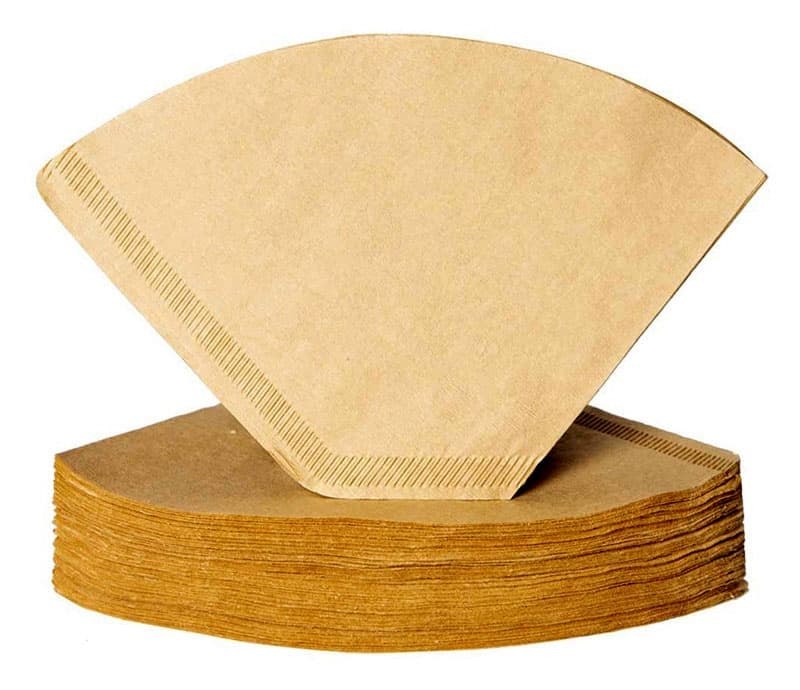
This ensures even saturation of grounds throughout brewing time, creating an utmost rich and flavorful cup of joe.
Unfortunately, because of its cone shape, this filter tends to be more prone to clogging than other types of filters due to its small hole at the bottom.
Also, the seam along the bottom and a side is not glued, it is actually heat-pressed. This is good on one hand, since there are no chemicals in the filter, but it also makes the bond weaker than it looks. Putting too much coffee and water into a cone filter might force it apart at the seam.
They also only fit certain brewers so make sure to double-check compatibility before purchasing.
Basket Coffee Filters
Baskets have wide flat bases which makes them ideal for wider carafes or pour-overs. Plus depending on what type of material you choose, baskets accommodate different sizes such as 8–12 cups, making them great for you if you prefer less frequent brew sessions and more quantity per batch.

They may not yield quite as fine results in terms of flavor when used with finer grinds – thus they’re generally better suited towards coarser grinds instead.
Also, they can often result in a slightly bitter taste if left too long during the brewing process, so do keep track of your timer. This is true for all brewing methods, but basket filters especially.
Disk Coffee Filters
If you’re looking for the best coffee flavor-wise, then this is your guy. Disks are great at catching all those fine particles left behind by paper filters and even better yet, they aren’t as prone to clogging (unlike cone filters).
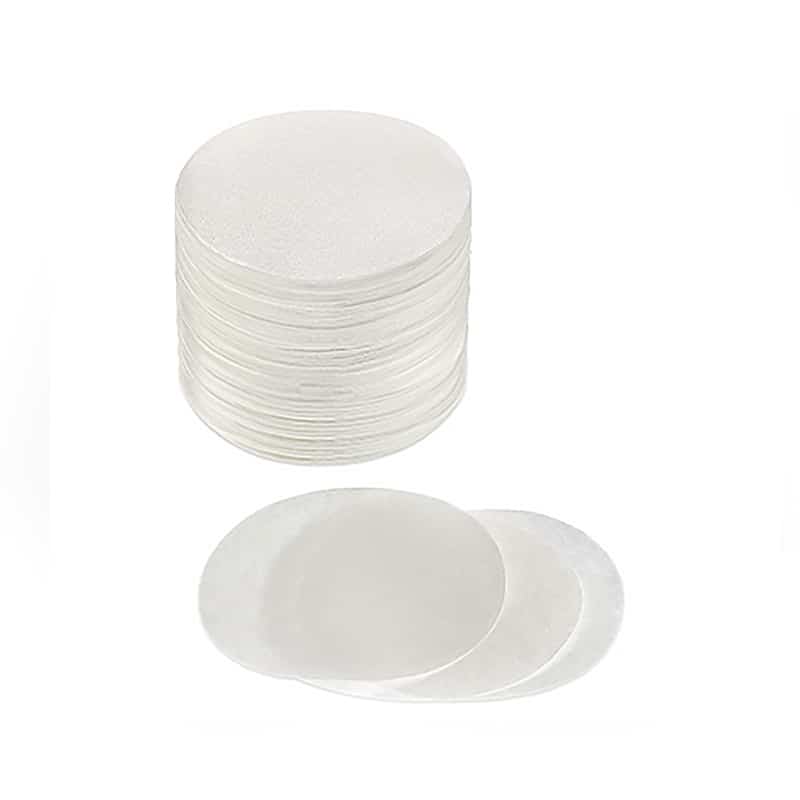
This makes them ideal for use with finer grinds – plus no worrying about over-extraction here.
Disks have also been found to help retain some of the oils from the grounds, giving it that richer flavor we all love.
The Aeropress and percolators use disc filters.
Coffee Filter Sizing
When it comes to coffee filters, size matters. If you want a full pot of flavorful brew, you’ll find yourself asking the question: What size filter do I need? The answer will depend on the shape and type of your filter.
Basket filter sizes compared
Let’s start with basket filters. These are much simpler when it comes to sizing – they come in two sizes only:
- Junior (for six cups or less) and
- Regular (for more than six cups).
I should mention from experience that while you can use regular-size filters in junior machines, using smaller ones in regular machines won’t work as well.
Cone filter sizes compared
Meanwhile, cone filters have more size options to fit the amount of coffee you’re making. There are four different sizes available, each designed for specific types of brewers and pour-over systems.
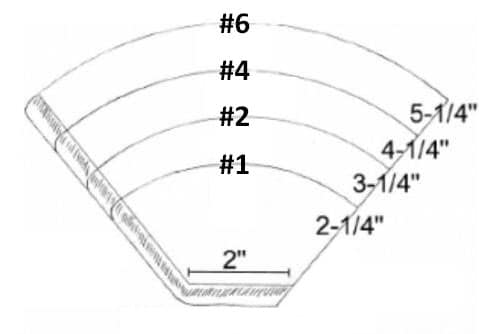
Here’s how it works:
- #1 is perfect for single-serving makers.
- #2 can handle two-cup to six-cup electric models or single/double pour-overs.
- #4 fits eight to ten-cup non-electric brewers or three to six-cup pour-over systems.
- #6 are meant for 10+ cup electric makers or 6-cup pour-overs.
The most commonly used conical sizes are typically #2 and #4 – these cover a wide range of needs across brewing capacities and styles.
Brand-Specific Coffee Filters and Systems
When it comes to coffee filters, there are a few brands out there that have developed their own filters. Chemex, AeroPress, and Hario V60 all require unique filters.
The Chemex Filter
Chemex filters are designed to remove sediment particles, undesirable oils, bitterness, and acidity from coffee. They are made of laboratory paper and are heavier than other filters on the market. Chemex filters are available in various shapes and sizes, including circles and squares, and can be used with Chemex coffee makers. Click here for more information on the Chemex filter.
Here’s a guide to choosing the Chemex size that’s fit for your needs.
AeroPress Filter
Aeropress filters come in paper micro-filter form, which is biodegradable and compostable, and can be purchased in packs of 700 or 350. Click here to learn more about the AeroPress filter.
You can also buy aftermarket metal filters for the Aeropress. Here’s a detailed comparison between the metal and paper AeroPress filters.
Hario V60 Filter
The Hario V60 filter is a cone-shaped paper filter designed for use with the Hario V60 pour-over coffee dripper. The filters are available in different sizes, with the “02” size being the most common.
The filters are disposable and are designed for single use. They are made of natural or white paper and are specially designed to fit the V60 dripper, with limited flow restriction to enhance clarity and balance in the coffee. Click here to learn more about the Hario V60 Filter.
Coffee Filter Alternatives and Substitutes
When you’re in a pinch and can’t get your hands on the right coffee filter, don’t worry – there are several alternatives that will do just fine. Here are some improvised coffee filters that could save you from making an emergency run to the store:
- Paper towel – The porous material is capable of catching any micro grounds or oils that would otherwise end up in your cup. Just make sure to use multiple layers so it doesn’t rip apart before the brew is done.
- Toilet paper – It won’t last as long compared to other materials but should be more than enough for one cup. I wouldn’t use the scented ones 🙂
- Spare cloth – while it isn’t the most hygienic option, using spare fabric like cotton t-shirts works quite well too. Make sure they’re clean beforehand.
- Sock – who knew that socks could double as a functional DIY coffee filter? Of course, be sure to use brand-new ones. Used socks “might” affect the taste of your brew 😉 And as with all of these alternatives, try using multiple layers for extra durability during brewing.
Remember that whatever material you use may still affect the taste due to its absorbent properties, especially if not rinsed properly beforehand. With this said, however, I think improvisation can go a long way toward getting a tasty cup (and out of tough situations).
Frequently Asked Questions (FAQs)
I’m sure you have a few questions about coffee filters, here are answers to the most common ones.
In conclusion, choosing the right coffee filter to use in your brewing is essential for creating delicious cups of joe that are tailored to your taste. From paper (bleached and unbleached filters) and metal to cloth and brand-specific filters – there’s something out there for everyone.
Don’t forget about those creative alternatives if you find yourself stuck without a regular filter on hand (because yes—even socks can be used in place). So remember this guide when selecting or substituting filters next time…
And please oh please, if you ever use a sock to filter your coffee, let me know how it goes in a comment below.


